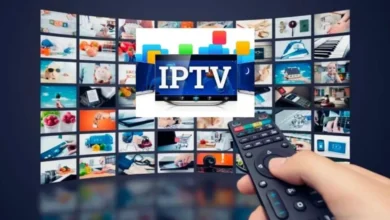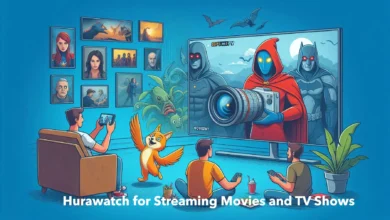IPTV Service: The Ultimate Guide to Streaming in 2024

In recent years, IPTV (Internet Protocol Television) has become a popular alternative to traditional cable and satellite TV. Platforms like norskiptv.net offer users a seamless experience, providing access to an extensive range of TV channels, movies, and on-demand content through the internet. Whether you’re new to IPTV or looking to enhance your understanding, this guide will cover everything you need to know about this revolutionary service.
What is IPTV?
IPTV stands for Internet Protocol Television, a technology that allows users to stream television content over the internet rather than traditional broadcasting methods such as cable or satellite. This method uses the internet’s infrastructure to deliver video and audio content directly to devices like smart TVs, computers, and smartphones. Unlike traditional TV services, IPTV offers more flexibility, allowing users to access live TV, time-shifted programming, and on-demand videos. With an IPTV service, you can watch your favorite shows, sports events, or movies whenever and wherever you want, as long as you have a stable internet connection.
How Does IPTV Work?
IPTV relies on IP (Internet Protocol) to deliver content. When a user selects a channel or program, the IPTV system fetches the content from a server and streams it in real-time. This process involves encoding, compressing, and distributing the video signal over the internet.
The key components of an IPTV service include:
Content Providers:
These sources supply the channels, movies, and other video content.
Middleware:
This software acts as the intermediary between the user and the IPTV platform, enabling smooth interaction.
Set-Top Box (STB):
A device that decodes the IPTV signal for TVs that are not natively IPTV-compatible.
Many modern devices, such as smart TVs and smartphones, eliminate the need for a separate STB, making the service even more convenient.
Types of IPTV Services
IPTV services are generally divided into three main categories:
Live Television:
Streams content in real-time, similar to traditional cable or satellite services. Examples include news, sports, and live events.
Time-Shifted Media:
Allows users to watch previously aired content, such as catch-up TV or programs stored for a limited period.
Video on Demand (VOD):
Offers a library of movies, series, and shows that users can watch anytime.
Each type caters to different viewing preferences, making IPTV a versatile solution for a wide range of users.
Advantages of IPTV
IPTV has gained significant popularity due to its numerous advantages over traditional TV services. Some of the key benefits include:
Flexibility:
Access your favorite content on various devices, including smartphones, tablets, laptops, and smart TVs.
Cost-Effective:
IPTV services are often more affordable than cable or satellite TV packages.
Customization:
Many IPTV providers allow users to create personalized playlists and choose specific channels.
On-Demand Access:
With VOD, users can enjoy movies and series whenever they want.
High-Quality Streams:
Many IPTV platforms support HD and 4K content, enhancing the viewing experience.
These advantages make IPTV an appealing option for tech-savvy consumers who value convenience and affordability.
Challenges and Considerations
While IPTV offers many benefits, it also comes with some challenges and considerations:
Internet Dependency:
A stable and fast internet connection is essential for smooth streaming.
Buffering Issues:
Poor network conditions can lead to buffering or interruptions.
Legal Concerns:
Some IPTV services operate without proper licenses, which could lead to copyright violations.
Device Compatibility:
Not all devices are natively compatible with IPTV, requiring additional hardware or software.
Choosing a reputable provider like norskiptv.net can help mitigate these challenges and ensure a reliable service.
How to Choose the Right IPTV Service
With numerous IPTV providers available, selecting the right one can be overwhelming. Here are some factors to consider:
Content Library:
Ensure the provider offers the channels, movies, and shows you’re interested in.
Pricing:
Compare subscription costs and look for transparent pricing structures.
Quality:
Opt for a service that provides high-definition streams without buffering.
Device Support:
Confirm compatibility with your preferred devices.
Customer Support:
A reliable customer service team is crucial for troubleshooting and assistance.
By evaluating these factors, you can find an IPTV service that meets your needs and preferences.
The Future of IPTV
As technology continues to advance, the future of IPTV looks promising. With the growing popularity of 5G networks, streaming speeds and reliability are expected to improve significantly. Additionally, advancements in artificial intelligence and machine learning may lead to more personalized viewing experiences, such as tailored recommendations and smart playlists. Moreover, IPTV is likely to integrate more seamlessly with other technologies, such as virtual reality (VR) and augmented reality (AR), offering immersive entertainment options. As consumer demand for flexible and on-demand content grows, IPTV will remain a leading force in the entertainment industry.
Final Results
IPTV has transformed the way people consume television content, offering unparalleled flexibility, affordability, and convenience. Whether you’re looking for live TV, on-demand videos, or catch-up programming, services like **norskiptv.net** provide a comprehensive solution to meet diverse viewing preferences. By understanding the technology, benefits, and considerations, you can make an informed decision and enjoy a superior streaming experience. With its continued growth and innovation, IPTV is undoubtedly the future of television entertainment.



